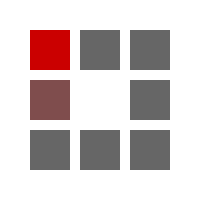| Series |
|---|
The FCPX Desert Island Challenge Part 15
An Overview of the Koji Advance Film Emulation Plug-In for Apple and Adobe
Look-Up Tables (LUTs) come in many flavors and types and we’ve covered Look-Up Tables here on Mixing Light. Some colorists love working with LUTs. Others hate. Me? I’m ambivalent. When they work, I like them. When they don’t work, I perfectly content skipping them. But remember…
There are many types of LUTs
Some LUTs are technical. They are designed to move images from one specific color space into another color space. Other LUTs are simply an interchange format for moving color corrections between otherwise incompatible color grading systems. Some LUTs fall in a middle ground between being creative and being technical. These LUTs attempt to emulate very specific ‘mediums’, such as lens filters or film stocks.
Koji Advance is a new Film Emulation LUT plug-in from Koji Color
The Koji Advance plug-in works with the Apple and Adobe ecosystems of post-production software. It’s a two-step system:
- Step 1: Select your camera – Koji supports and has profiled 14 different recording formats across 7 different cameras.
- Step 2: Select your target film stock – Koji offers 5 different color film stocks and one Black & White film stock. Within each film stock are several varieties offering blu-ish through warm-ish tones and a low-contrast version.
It’s actually a pretty smart system. Koji has profiled each of the source cameras and recording formats. They move your images from their recorded Log, RAW or flat recording into the HD color space. Then, the ‘film look’ is applied to your images. It seems to allow for very consistent results as you move between film stocks.
But wait… isn’t one argument against LUTs that ‘one LUT does not fit all images’?
Grasshopper… you’ve been listening!
You are correct, the big problem that most of us have with LUTs is the desire for LUTs to be ‘set and forget’. But nothing can be further from the truth. Different LUTs expect different types of images to be fed into them. Some LUTs want lots of shadow and highlight protection. Other LUTs want the full tonal range to be filled. This means we have to prepare and manipulate our images to feed them into a LUT and keepg the LUT from destroying the image.
Koji Advance offers several new tools that allow us to prepare the image BEFORE it’s loaded into the LUT
As you’ll see in the Video Insight below, Koji Advance has a nice selection of color correction sliders that allow us to make the adjustments we need to optimize our images before the LUT is applied. It’s an image processing pipeline I’ve advocated you use when color grading in DaVinci Resolve.
And it’s the reason I’ve decided to enter this plug-in into the Desert Island Challenge. You can quite literally color correct within this plug-in. But like the Nattress Levels and Curves plug-in, I don’t think this plug-in will be my final choice as my single essential 3rd party plug-in… but it is definitely a 2nd or 3rd addition to my plug-in toolset.
Don’t miss the embedded video below this Insight!
I’ve embedded a video of Dale Grahn, a storied color timer who is one of the creative talents behind the Koji plug-in. In the video he takes you through color grading a clip (to match the work he did on Gladiator) and I want you to notice how he thinks about image manipulation. It’s different than you’ll hear from most digital colorists and his approach is heavily reflected in the Koji Advance plug-in.
But first, in this Insight I’ll point out a few sliders to pay attention when Dale manipulates them.
Watch this Insight first, then move on to Dale’s demo
It’s all very interesting, even if you never use this plug-in or the Koji LUTs.
– pat
Listen to Colorist Dale Grahn explain his approach using Koji Advance
Dale Grahn on Gladiator from Koji Color on Vimeo.
Additional Downloads
Sorry... downloads are available for Premium Members only.
Become a Premium Member



